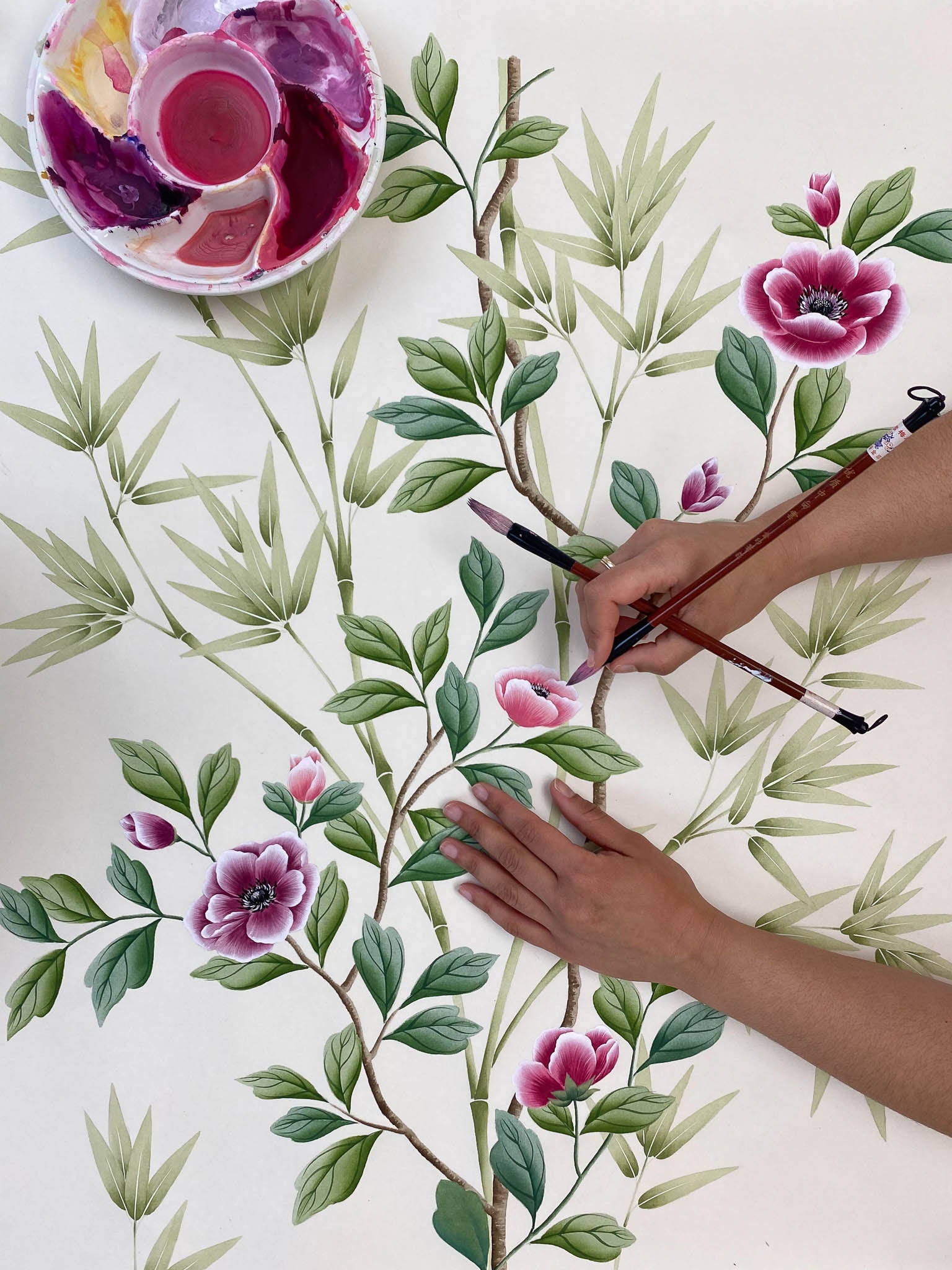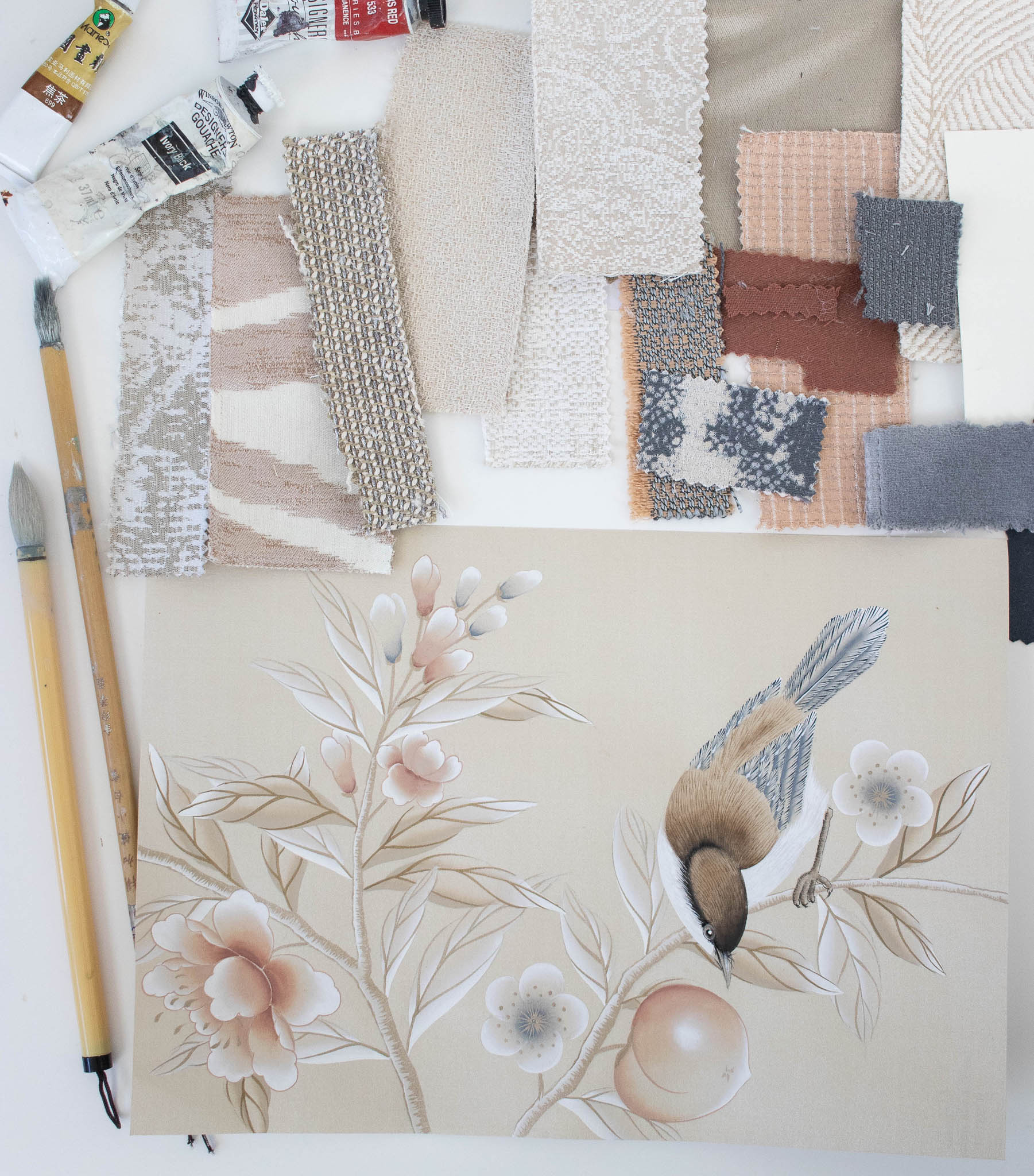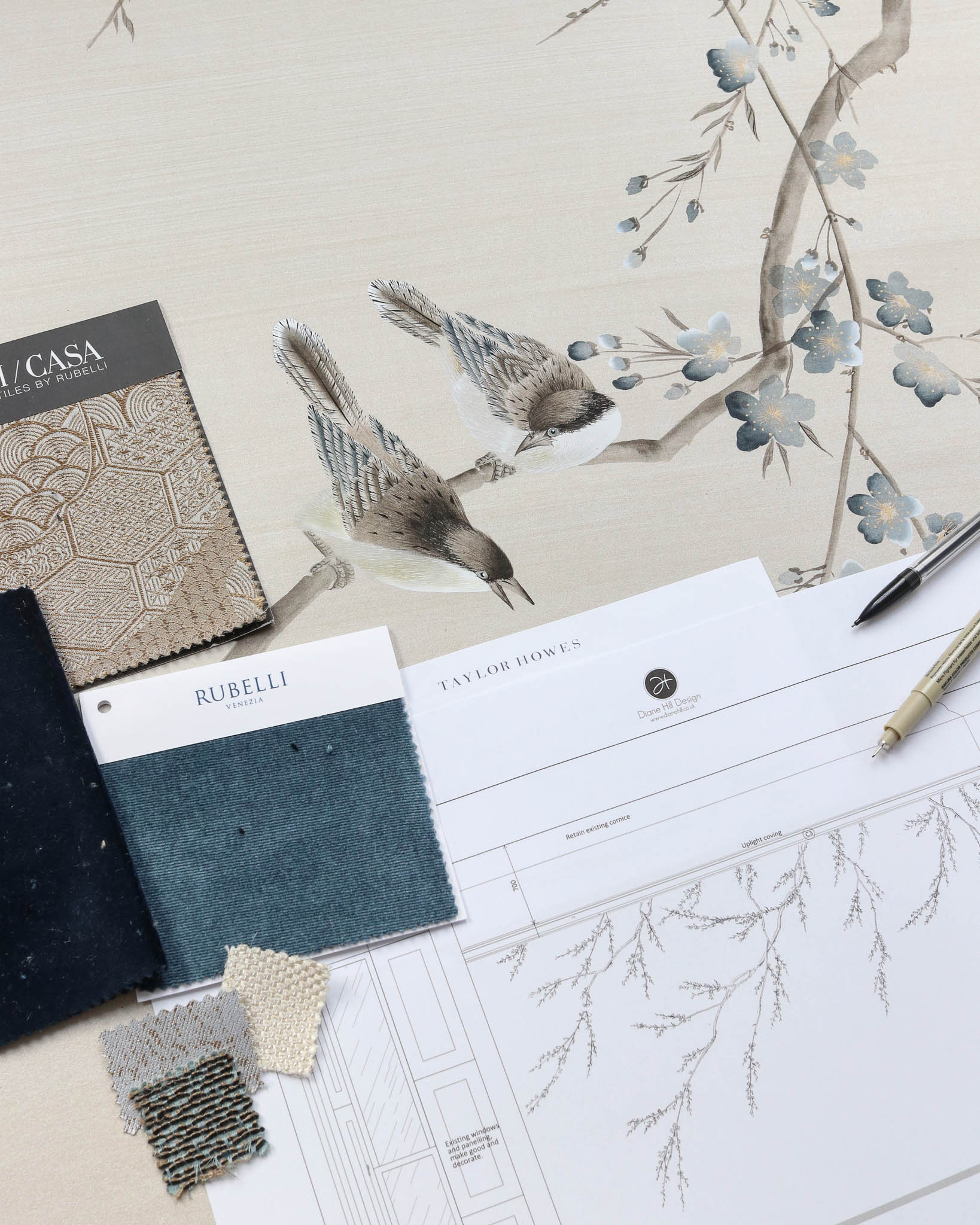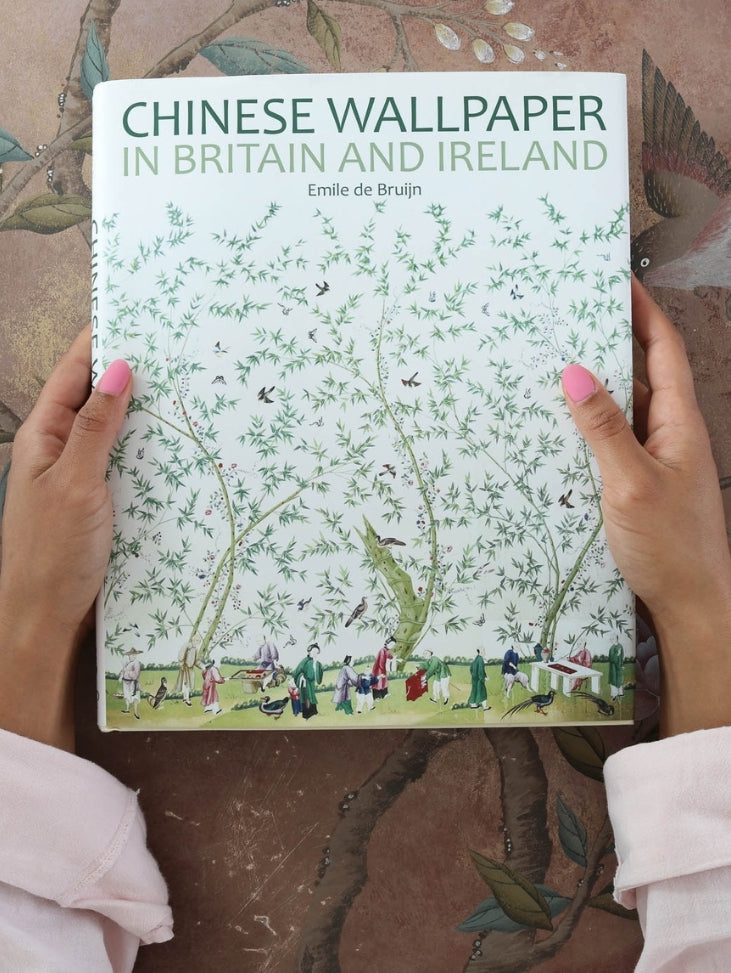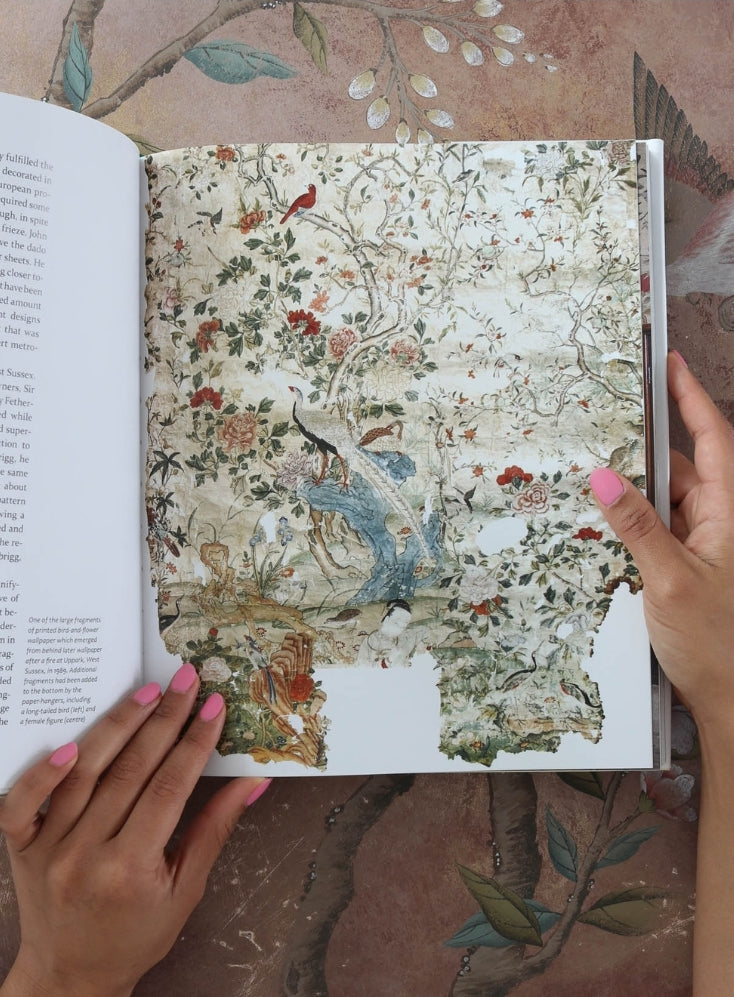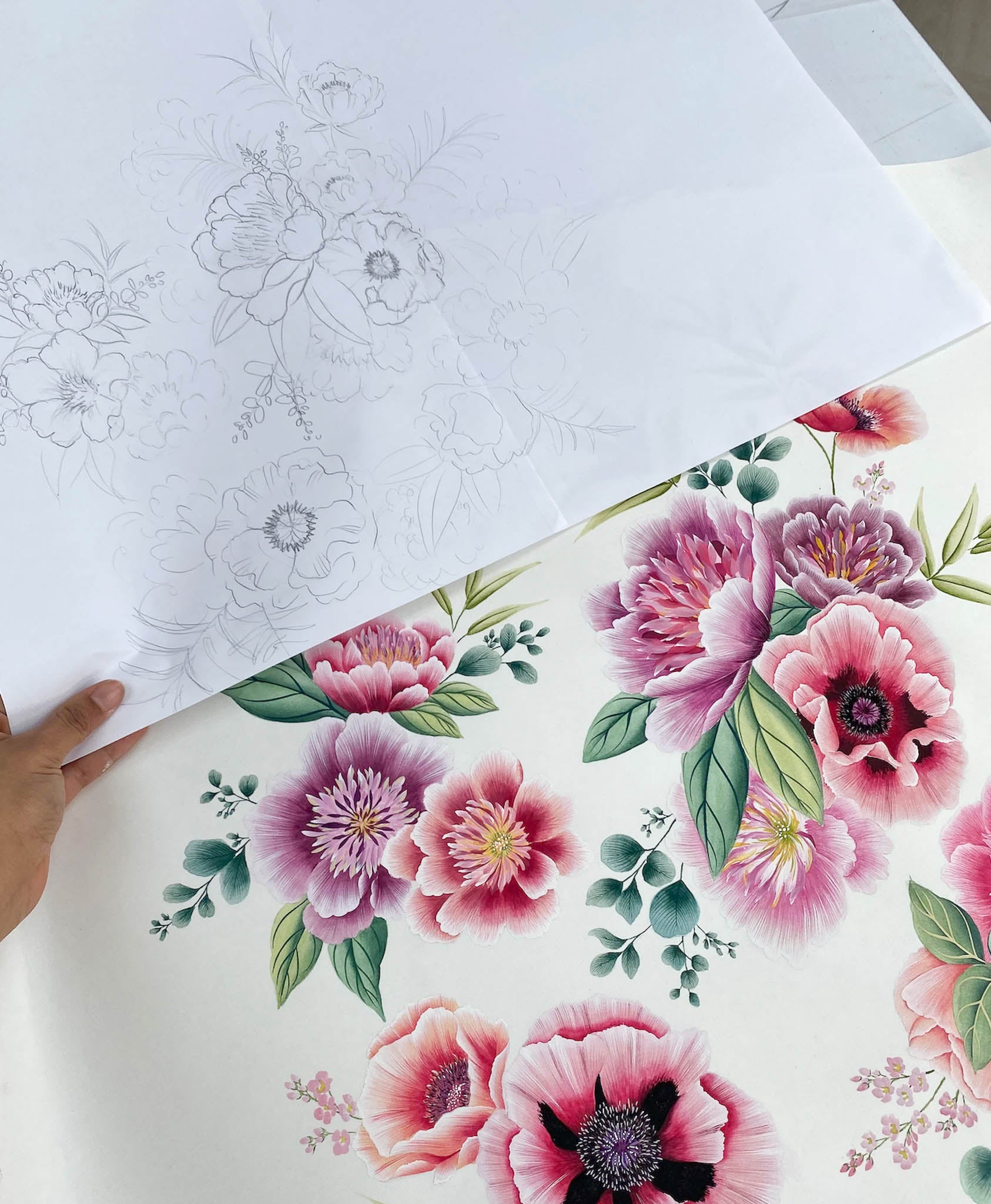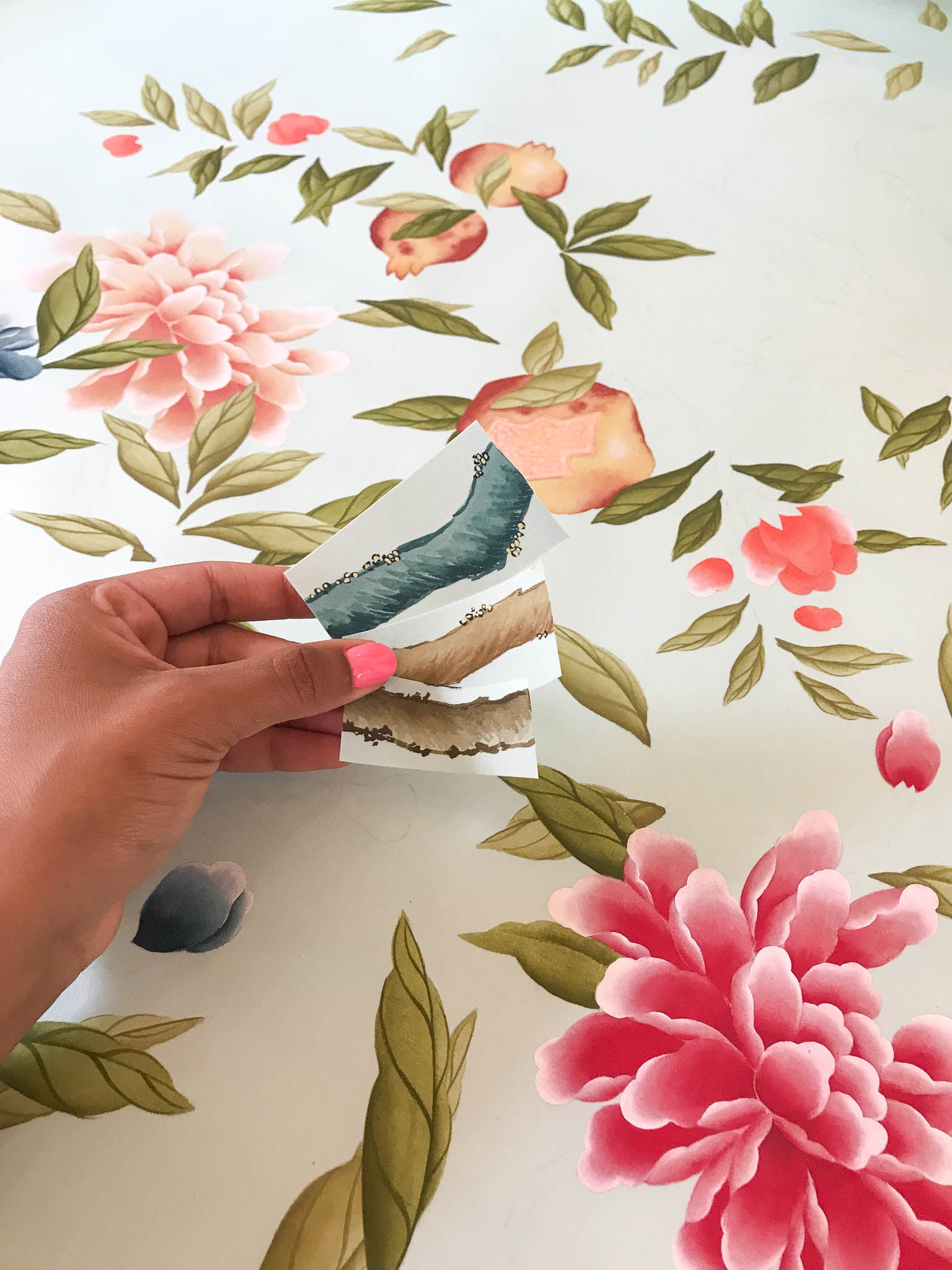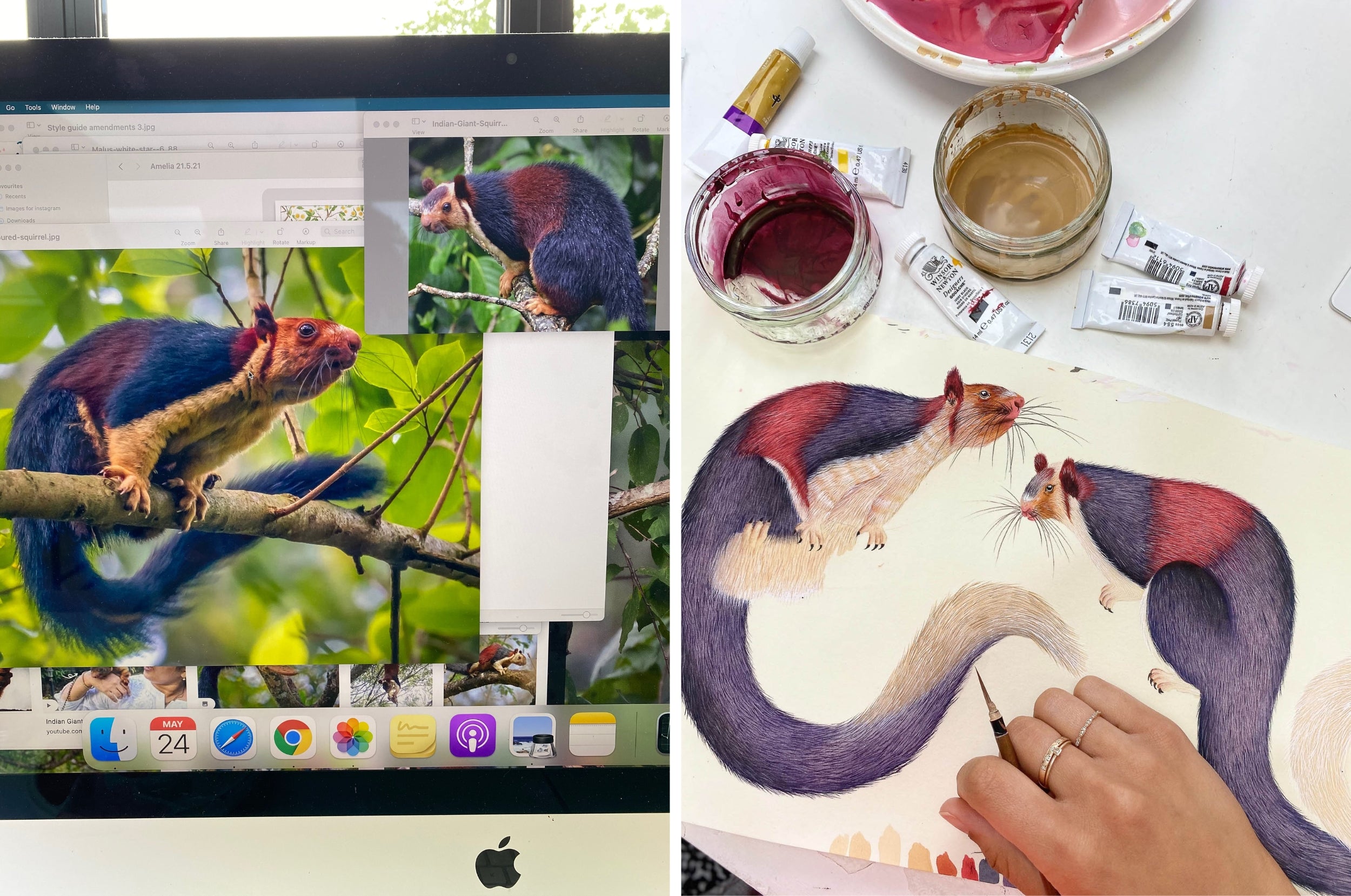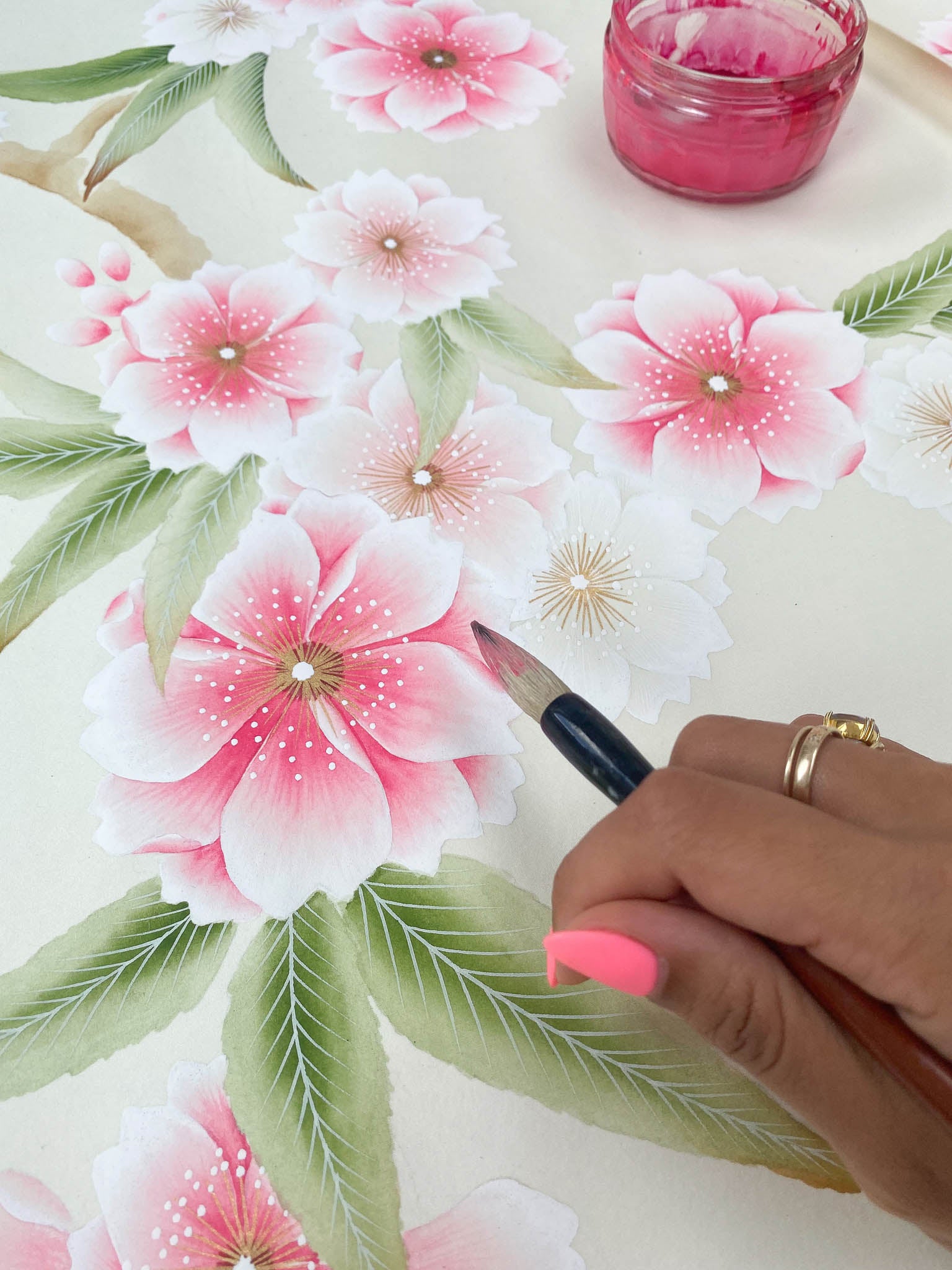Your chinoiserified squirrels are really adorable! I found you a few days ago but you’ve already given me new wings! Love both your blog and your creations!!

How To Paint With Confidence And Brush Off The Fear
|
5 min
|
5 min
Painting the original design for 'Rosa' chinoiserie wallpaper
Picture this: you’re geared up and ready to paint, your art materials are neatly arranged, you pull up your chair, today's THE day!
You look down, there’s a blank expanse of art paper staring at you; you retreat, fear steps in, telling you your idea isn’t good enough and you’ll mess up that beautiful sheet of paper. Sound familiar?
In this blog post, I’ll share some seriously helpful strategies so you can overcome your paint anxiety and start your paintings confidently .
Before we dive in, if you want to learn more Chinoiserie painting techniques and strategies, I can help you! Join me by subscribing for free painting advice and downloadables, with so much more on the way.
Here are my top tips on how to start your paintings with confidence. ‘Fail to prepare, prepare to fail’ comes to mind when thinking of any new painting project.
Planning the design and colour of your artwork in advance puts you in a much better position to create your art with confidence. Using scraps of fabric or paint swatches to create your colour palette is perfect for thinking ahead, this creates a visual mood board and helps you achieve amazing results!
If you're stuck on how to start a painting, my biggest tip is to surround yourself with inspirational images, literally surround yourself! I have a mini library of art books that I reference over and over. Before I start any new project I gather images I love, it could be for the details, colours, patterns or composition. I start a Pinterest board of references and print out everything that inspires me.
Keep your references close by and pull elements from the things you love about them. You'll soon find creativity flowing!
Don’t dive in without a plan, especially if you’re using expensive artist papers. Sketch your artwork in a rough format then refine in stages, you can even use digital tools to help you move the composition around more easily. To do this, scan your sketch into Photoshop or Canva and move/add/delete where necessary, then print this out, lay tracing paper over the top and further refine with a more detailed drawing.
Related blog post: The Making Of Rebel Walls 'Chinoiserie Chic' Wallpaper
Here's a look into my sketching and refining process, It's important to work in stages, build up layers in your sketches and keep refining until you're happy. It will be so much more enjoyable to paint once you've created a beautiful composition.
Once you are happy, trace and transfer your design to the paper. With your composition perfectly planned, all you need to do is paint. I explain more about transferring your design in my e-book 'How To Paint Chinoiserie Art'.
Always prep and test your paint colours before you start your painting. Cut a slither from your art paper so you can test the consistency and tone (I provide small cuttings with every silk paper order). Gouache paint has a tendency to dry differently than you expect, so use a hairdryer to make sure the sample is bone dry before judging the colour.
If you're having trouble deciding on which colours to use, then Pantone or paint swatch charts are a great tool to help you decide. You can visit your local hardware store and pick up emulsion paint swatches. Using popular brands like Farrow and Ball or Benjamin Moore will come in handy if you're working with clients and need to communicate colours.
Create yourself a mood board using your scraps and cuttings, lay everything out in front of you and begin to mix colours from there. You'll thank yourself later!
Tracing basic shapes from photographs is a great way to ease into your drawings if you're not feeling confident. I often trace outlines of animals as a starting point to get the proportions right, I’ll then ‘chinoiserify’ the drawing by stylising the overall look. This is a simple and effective route to achieving the result you want - quicker. It’s important to recognise that drawing and painting are two different skills, you may be great and one and not the other!
Don’t overthink your painting and don’t strive for perfection, this will become a barrier to your creativity, have fun with it and experiment on budget paper types until you feel more confident. Avoid putting too much pressure on yourself to create a masterpiece every time you paint. Set realistic goals and remind yourself that not every piece of art needs to be perfect.
Don’t worry about small mistakes, they are all a part of the process. A small dot of paint here and there, or your pencil marks on show are all part of the story, it’s what makes handmade so special, embrace those small imperfections. In my e-book I show you how you can fix bigger mistakes!
If you're painting for something that will end up as a printed design, keep in mind its not the end of the world if you mess up something major! You can always just paint in a whole new piece on an additional piece of paper, knowing that this can be cut out and added in on photoshop (I do this all the time, see below!) I feel so much more confident painting art for digital print, as there is so much leeway for amendment!
Related blog post: The making of my botanical and bird print collection
Most importantly enjoy the process, focus less on the outcome and remember that this isn’t life or death, it's art, and if you mess up, so what? Do it again and celebrate the fact that you learn something new with every mistake.
Just breathe, remember everything will be ok….and paint your heart out. You got this!
Comments
Your chinoiserified squirrels are really adorable! I found you a few days ago but you’ve already given me new wings! Love both your blog and your creations!!
Diane, I was wondering if you ever have to vectorize your images or if you just send them as raster images when you are painting for wallpaper designs or anything that will require printing? I loved your book and I admit the blank piece of paper is intimidating! Thanks for your advice!
This is exactly what this perfectionist needed to hear from another perfectionist!
I’m an absolute beginner as an artist with no discernable talent and I’ve given myself 2 years to learn Chinoiserie to a decent level but a tiny corner of my brain still expects something impressive every time I lift a brush!
I love your tip about digital art and using photographs as stencils.
Thank you Diane!
